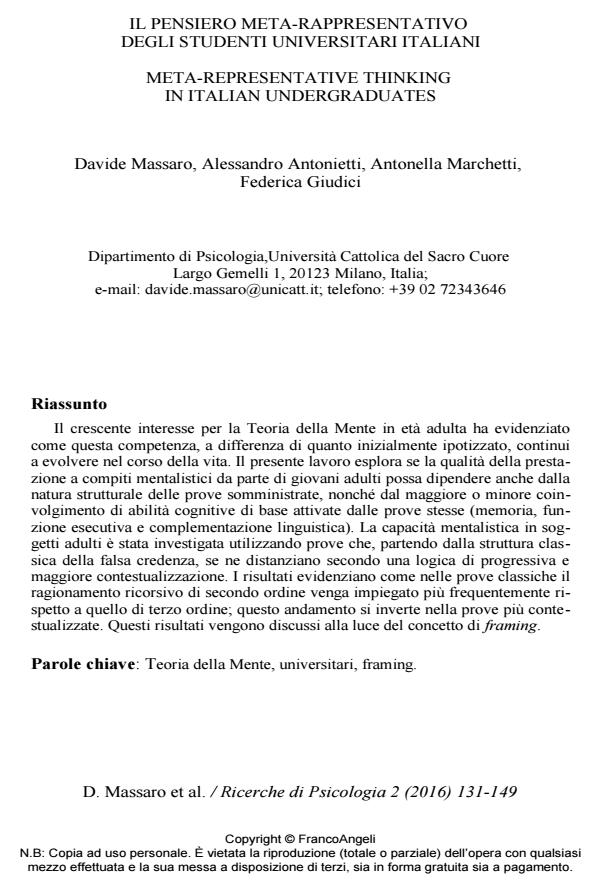Meta-representative thinking in italian undergraduates
Journal title RICERCHE DI PSICOLOGIA
Author/s Davide Massaro, Alessandro Antonietti, Antonella Marchetti, Federica Giudici
Publishing Year 2016 Issue 2016/2
Language Italian Pages 19 P. 131-149 File size 223 KB
DOI 10.3280/RIP2016-002001
DOI is like a bar code for intellectual property: to have more infomation
click here
Below, you can see the article first page
If you want to buy this article in PDF format, you can do it, following the instructions to buy download credits

FrancoAngeli is member of Publishers International Linking Association, Inc (PILA), a not-for-profit association which run the CrossRef service enabling links to and from online scholarly content.
The growing interest in the Theory of Mind in adulthood supported the notion that this competence, as opposed to what initially speculated, continues to evolve over a lifetime. This paper explores whether the quality of the performance in mentalistic tasks by young adults may also depend on the structural nature of the tests administered, as well as the degree of involvement of basic cognitive abilities activated by the same tests (memory, executive function, and language complementation). Mentalistic skills in adults were investigated by means of tests inspired by the classical false belief tasks but more contextualized. Results show that in the classical tests second-order recursive reasoning is used more frequently than the third-order. This trend is reversed in more contextualized tasks. These findings were discussed in the light of the concept of "framing".
Keywords: Theory of Mind, undergraduates, framing
Davide Massaro, Alessandro Antonietti, Antonella Marchetti, Federica Giudici, Il pensiero meta-rappresentativo degli studenti universitari italiani in "RICERCHE DI PSICOLOGIA " 2/2016, pp 131-149, DOI: 10.3280/RIP2016-002001